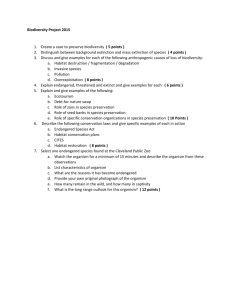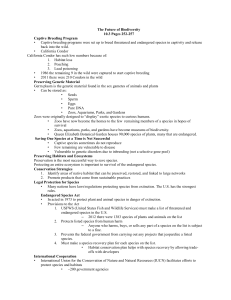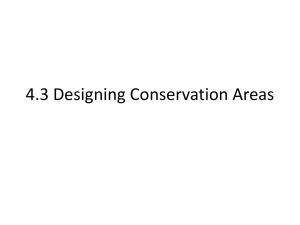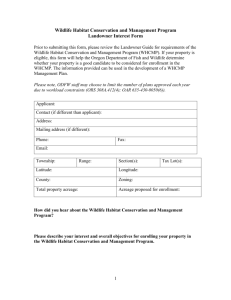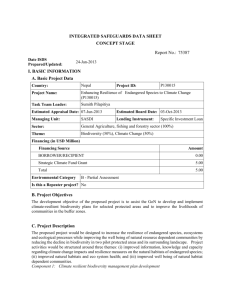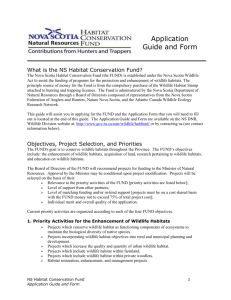habitats - s3.amazonaws.com
advertisement
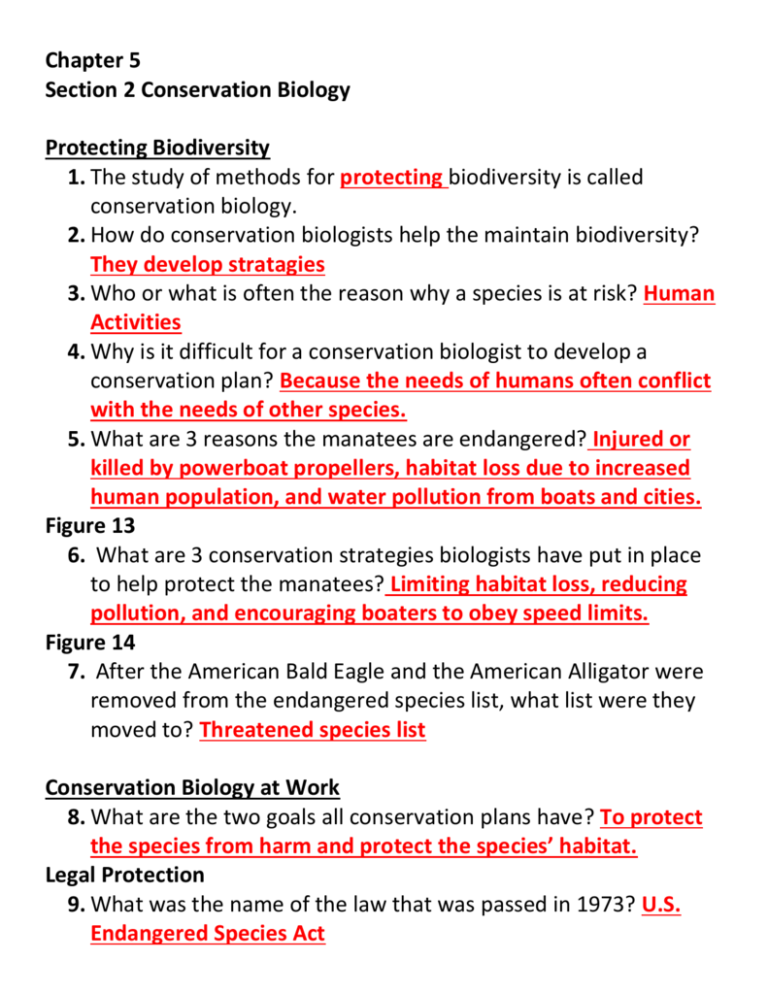
Chapter 5 Section 2 Conservation Biology Protecting Biodiversity 1. The study of methods for protecting biodiversity is called conservation biology. 2. How do conservation biologists help the maintain biodiversity? They develop stratagies 3. Who or what is often the reason why a species is at risk? Human Activities 4. Why is it difficult for a conservation biologist to develop a conservation plan? Because the needs of humans often conflict with the needs of other species. 5. What are 3 reasons the manatees are endangered? Injured or killed by powerboat propellers, habitat loss due to increased human population, and water pollution from boats and cities. Figure 13 6. What are 3 conservation strategies biologists have put in place to help protect the manatees? Limiting habitat loss, reducing pollution, and encouraging boaters to obey speed limits. Figure 14 7. After the American Bald Eagle and the American Alligator were removed from the endangered species list, what list were they moved to? Threatened species list Conservation Biology at Work 8. What are the two goals all conservation plans have? To protect the species from harm and protect the species’ habitat. Legal Protection 9. What was the name of the law that was passed in 1973? U.S. Endangered Species Act 10. The Endangered Species Act of 1973 makes it illegal to harm, collect, harass, or disturb the habitat or of any species on the endangered or threatened species list. 11. The act also prevents the U.S. government from spending money on projects that would harm these species or their habitats. 12. The goal of the CITES is to control or prevent international trade. Habitat Preservation 13. Conservation biologist often create nature preserves such as national parks to protect the habitats of endangered species. 14. What was the name of the United States first national park? Yellowstone National Park Wildlife Corridors 15. What design did conservation biologists develop to help species that require enormous amounts of land? Wildlife Corridors 16. What is the goal of a wildlife corridor? To connect smaller parks together, so animals can move from one preserve to another. Figure 15 17. What does the wildlife corridor in figure 15 provide the Florida Panther? A safe passage under a road. Habitat Restoration 18. Define habitat restoration: the process of returning a damaged habitat back to a health condition. Figure 16 19. What is the goal of restoring the eelgrass habitat? To help reserve the shellfish population and fish in Narragansett Bay Wildlife Management 20. The sale of hunting licenses provides funds for maintaining a wildlife area. Captive Populations 21. Define a captive population: a population for organisms that is cared for by humans. 22. Two negative consequences for keeping a population captive are it can be expensive and captive animals sometimes lose their wild behaviors. Reintroduction Programs 23. Define a reintroduction program: returning a threatened species back to its original habitat after the threat has been removed. 24. What must occur to ensure a reintroduction program is successful? The threat must be removed. Seed Banks 25. How do seed banks help maintain biodiversity? If any plant species becomes extinct in the wild, the stored seeds can be used to reintroduce them to their original habitats. Relocation 26. How is relocation different than reintroduction? When you relocate a species you move it to a new habitat.

